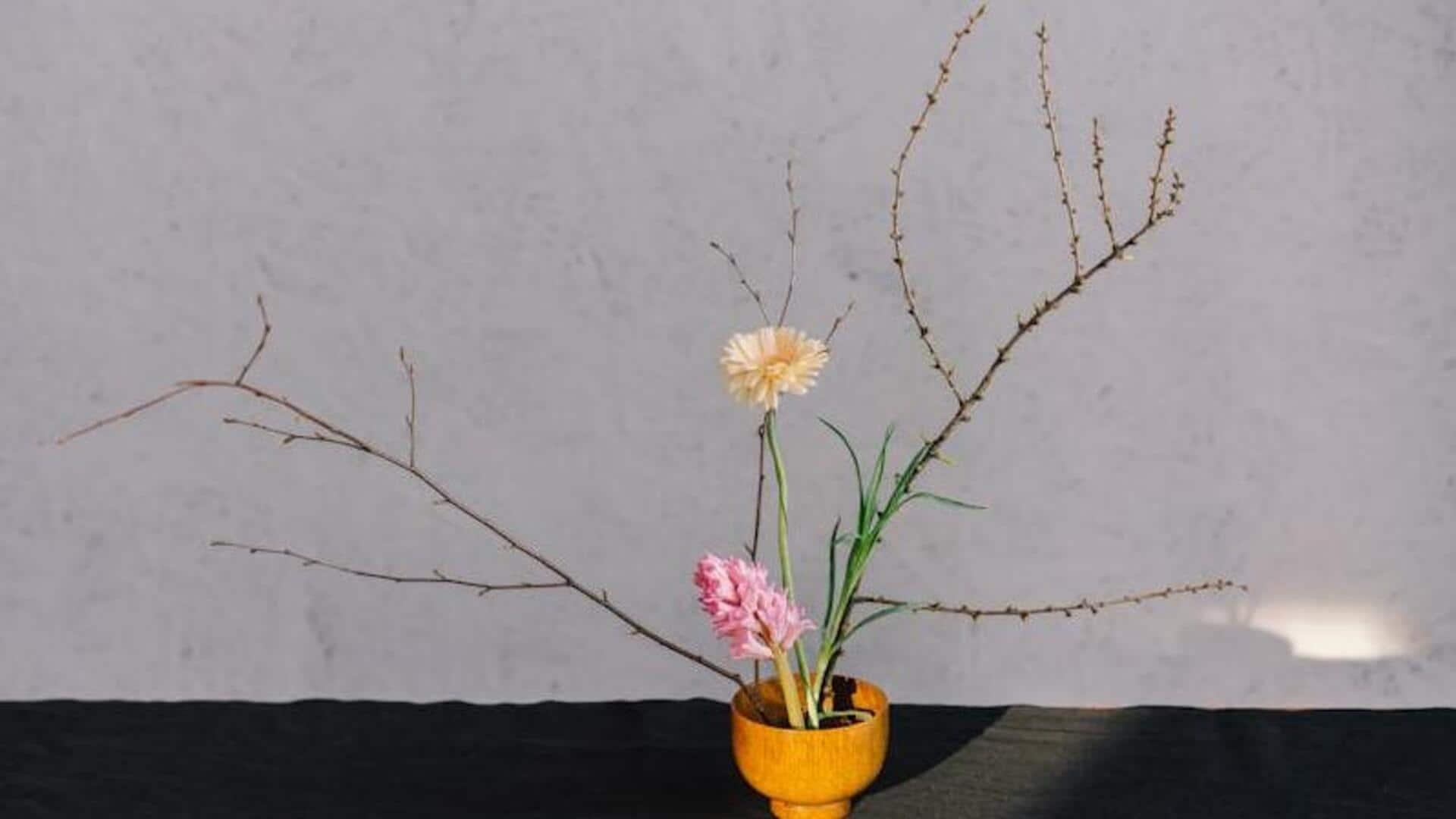
5 facts about ikebana you probably didn't know
What's the story
Ikebana, the age-old Japanese art of flower arrangement, goes beyond scattering flowers in a vase.
It is a disciplined art where nature and humanity are brought together.
Unlike the Western way of doing floral arrangements, which emphasizes on quantity and color, ikebana emphasizes on harmony, balance, and simplicity.
Here are five interesting facts about ikebana that highlight its cultural significance and uniqueness in Japanese culture.
Historical roots
Origin dates back centuries
With a history that spans over six centuries, ikebana originated from the Buddhist practice of offering flowers to spirits.
Over the years, it evolved into an art form that samurai warriors and aristocrats practiced as a means of meditation and self-expression.
The oldest ikebana school, Ikenobo, was founded in Kyoto in the 15th century.
Artistic simplicity
Emphasis on minimalism
One of the core principles of ikebana is minimalism.
Unlike Western floral arrangements that often use numerous blooms to make an impact, ikebana uses fewer elements to create beauty through simplicity.
Every element in an arrangement has a specific purpose, and contributes to the overall harmony between nature and space.
Nature's cycle
Use of seasonal flowers
Ikebana, the Japanese art of flower arrangement, strongly emphasizes using seasonal flowers to reflect nature's cycle through the year.
This way, practitioners choose materials that are available in nature in a particular season, nurturing a sense of respect for nature.
It also reminds of changing seasons, prompting mindfulness and reflection on changes in the environment.
This makes arrangements not just more beautiful but also deeply connected with nature.
Hidden messages
Symbolic meanings in arrangements
In the world of ikebana, everything in an arrangement symbolizes something deeply meaningful.
They can symbolize the transience of life or how closely humans are related to nature around them.
Symbols can be interpreted differently depending on the culture or the ikebana artist's perception.
This adds a deeper layer of meaning to the art, making every arrangement a story of its own.
Diverse elements
Incorporation beyond flowers
While flowers take center stage in ikebana, branches, leaves, grasses, fruits, stones, and even water may be used in the designs.
These elements construct dynamic visual narratives beyond mere floral displays, reflecting broader aspects of the natural world within artistic expression itself, without relying solely upon blossoms.